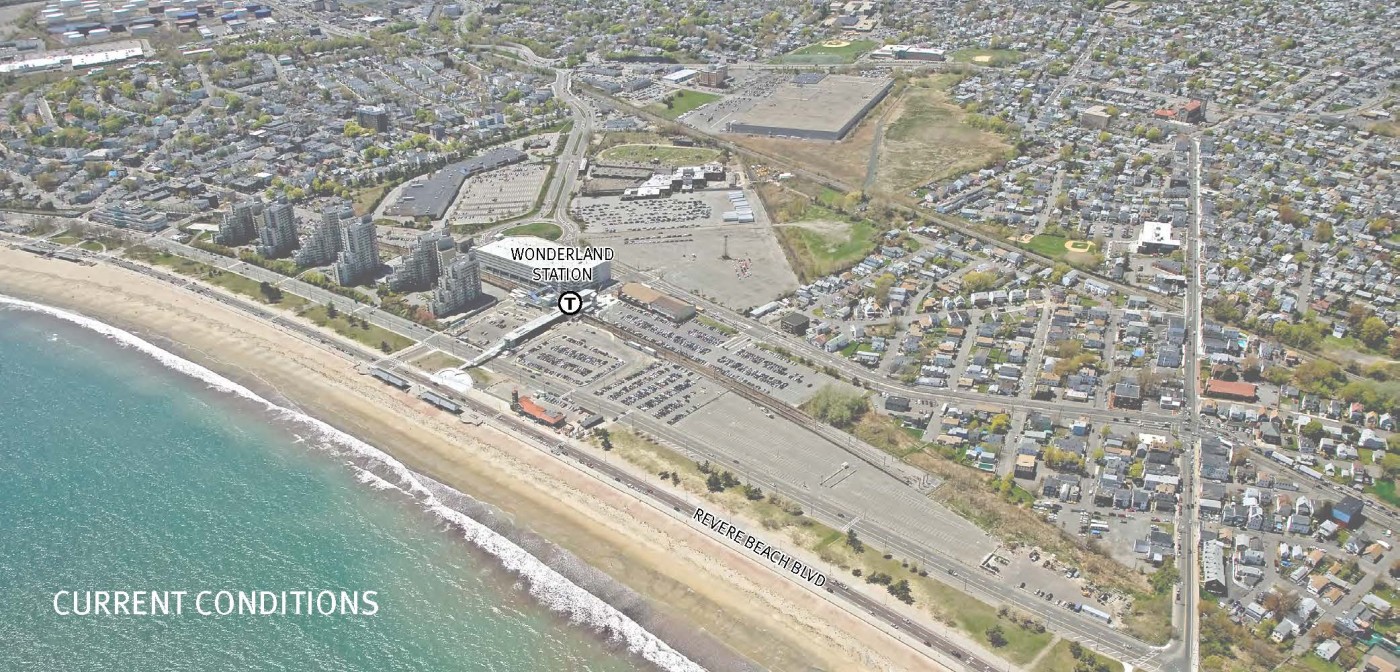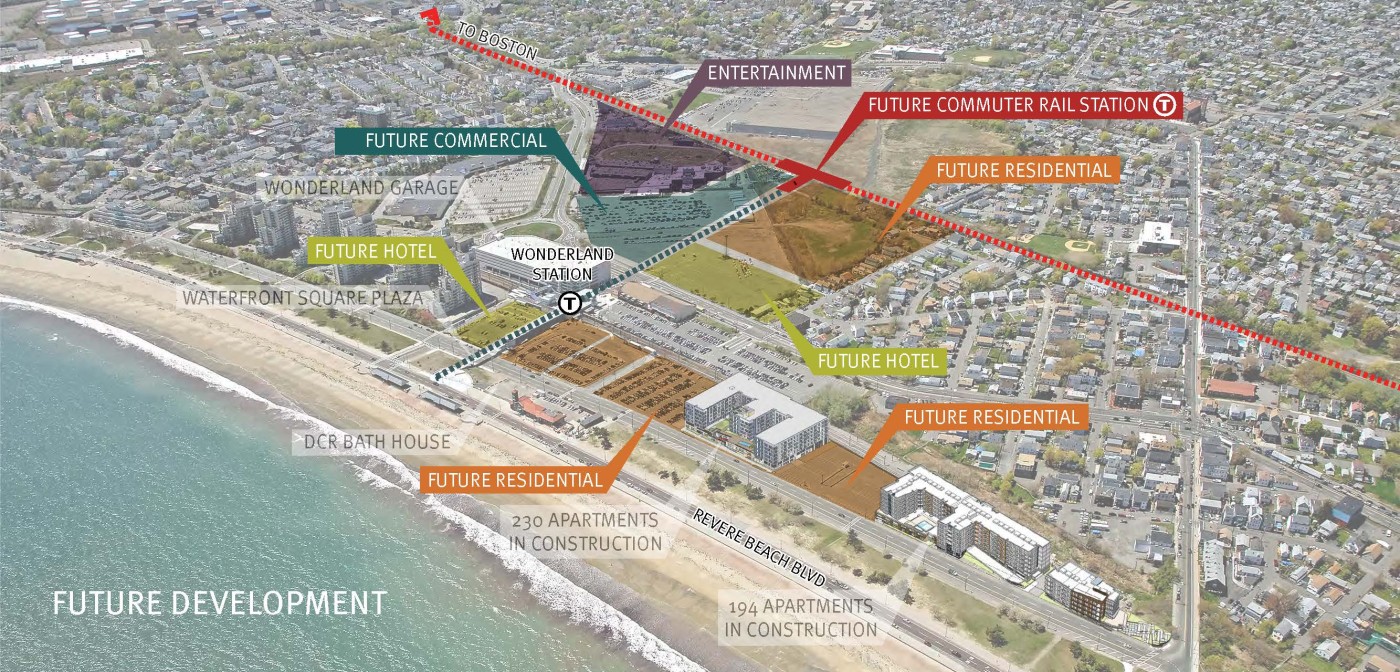


On July 12, 1895 Revere Beach opened as the first public beach in the United States. For decades it served as a lively waterfront destination just eight miles north of Boston featuring several amusements, ballrooms, food stands, pavilions, and sidewalks. However, in the late 1960’s the beach began to deteriorate and soon became a strip of honky tonk bars and empty buildings. The famous “Blizzard of ’78” proved to be the final death knell for the “old” Revere Beach, destroying the remaining attractions and local businesses. As a result, Revere Beach became a hub for crime which pushed commercial investment in the area to an all-time low.
In July of 1996, Revere Beach commemorated the centennial of its opening and was designated a National Historic Landmark. This designation stimulated a revitalization effort to restore the water quality and ecosystem of Revere Beach; an effort that would take 10 years to rectify.
In 2006, Arrowstreet was hired to develop a master plan that would revitalize the tired waterfront community. Rich in its history as a vibrant beach destination with access to public transportation, community support for a redevelopment plan was overwhelming. Working closely with the city, Arrowstreet set out to develop a plan that would provide connectivity between the neighboring community, the transit station, the beach, and parkland to truly create the Renaissance of Revere.
As part of the firm’s role as master planner and architect, Arrowstreet was hired to design Waterfront Square; a transit-oriented, mixed-use development on 11 acres of oceanfront land surrounding the Wonderland MBTA station featuring a plaza, pedestrian bridge, parking garage and intermodal station. As a result Waterfront Square has now transformed into an accessible and sustainable live/work/play community.
Arrowstreet continues to design state-of–the art mixed use residential communities along the Revere Beach waterfront as outlined below:
21 Ocean Avenue
500 Ocean Avenue
Ocean 650 at Waterfront Square
571 Revere Street
Pedestrian Bridge, Public Plaza and Public Spaces
Dryft
Project Details
location
Revere, MA
client/owner
Eurovest Development
size
1,366,000 SF
categories
Mixed Use
CERTIFICATION
pending LEED certification
Team
Awards
Architizer A+ Awards
Related News
-
 Spotlight on 500 Ocean Avenue
Spotlight on 500 Ocean Avenue -
 Waterfront Square Update
Waterfront Square Update -
 Wonderland reimagined
Wonderland reimagined -
Wonderland Garage Opens
-
Wonderland South Garage – Progress Update
-
 Progress for Wonderland Parking Garage
Progress for Wonderland Parking Garage -
 Revere Wonderland Wins Award
Revere Wonderland Wins Award -
 Released: Upton + Partners Groundbreaking
Released: Upton + Partners Groundbreaking -
 Construction Update: Ocean 650
Construction Update: Ocean 650 -
 Housing Group Visits Ocean 650
Housing Group Visits Ocean 650 -
 Revere Transit Infrastructure Project Groundbreaking
Revere Transit Infrastructure Project Groundbreaking -
 Revere Bridge Lights Up the Holidays
Revere Bridge Lights Up the Holidays
Architectural Plans / Process


